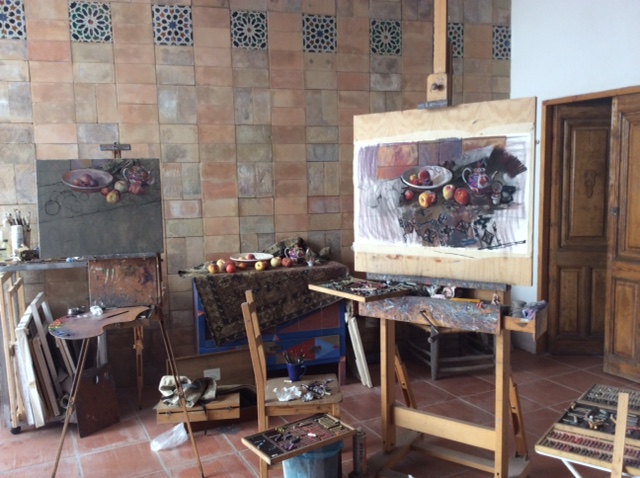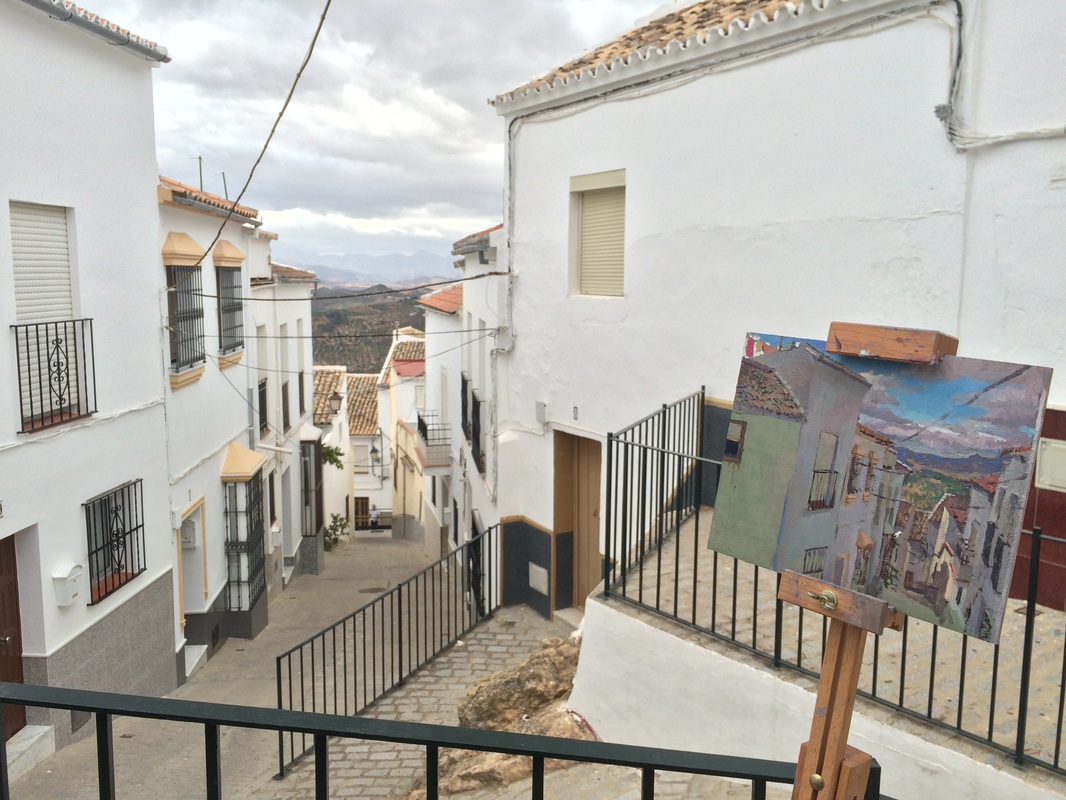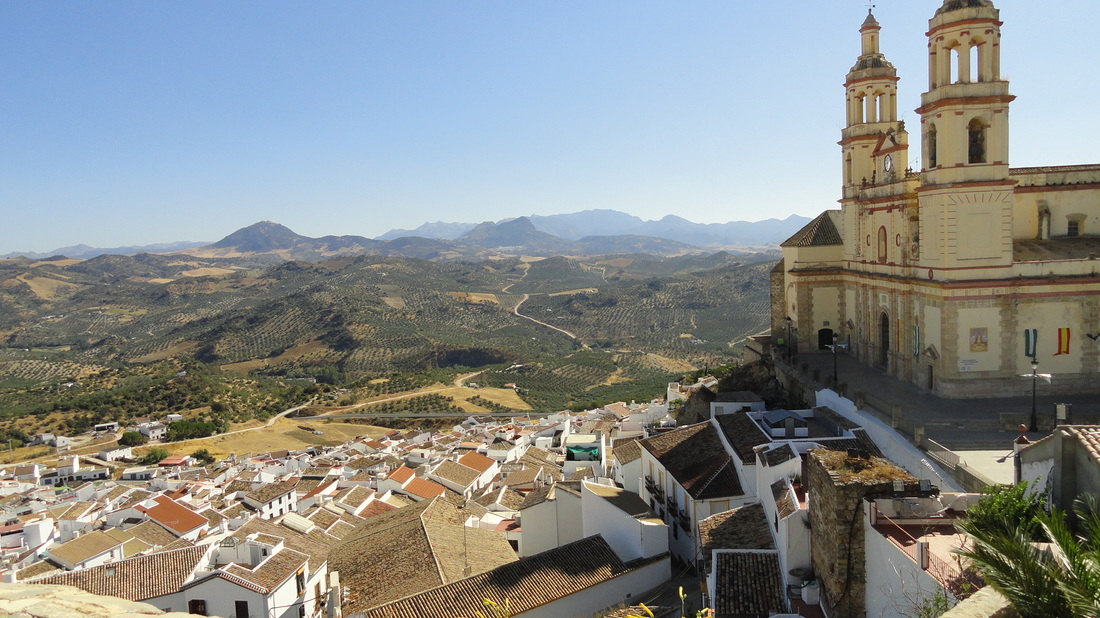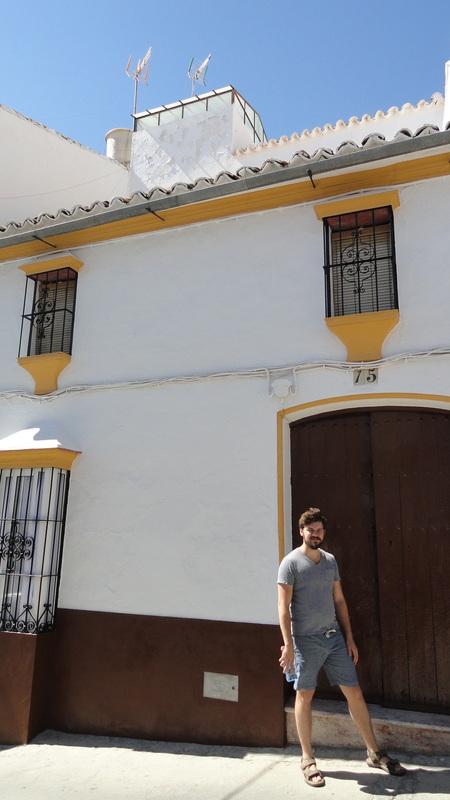|
Daud and I have been working on a still life subject these past couple of weeks. I've been working in oil and he has been working in pastels. Below is a video about Daud's composition and our approaches to the same subject in different mediums.
2 Comments
Education can be a painful experience. I’m a big believer in pursuing a variety of educational experiences in order to widen the breadth of my abilities. This means exploring the unknown--showing a sometimes-painful interest in things that I am not naturally inclined towards and finding some way to bridge the gap between those things and my practice. What can feel even worse, however, is exploring the known--the discomfort that comes from directly recognizing and contemplating the areas of my skillset that are lacking, and looking for ways to fix them.
Frustration, and even boredom are necessary facets in learning something new. One of the best signs that I am in the throws of an educational experience is that I feel almost completely lost, and a little bit like an idiot. It becomes clear in retrospect that those are the times when I am being most stretched in my practice. I’ve learned to anticipate this feeling, and even relish it in the moment (though the frustration and aimlessness feels real none the less). The more complex the technique, the longer the spell. This last month I have been experiencing the frustrations and rewards of stretching the limits of my knowledge. I decided to study with Daud because I was drawn to the passion with which he uses his brushstrokes, his ability to give dignity to the mundane. My paintings up until now have been about the spiritual, both in my subject matter and my technique. I’m finding that painting the things around me and right in front of me—wires, fabric, tile, shingles, houses, mountains, fields—has been as hard as I thought it could be. With some happy exceptions, the majority of the paintings I’ve attempted this past month have displayed just how much I can learn from Daud in terms of painting from life with boldness and passion. Yesterday, I had a successful go at this. I scouted out a new painting spot, asking a nice old man if I could stand on his front porch (“Bueno?”). I set up my easel, and painted. For the first time since arriving, I felt like I was finally able to concentrate on my subject while replaying instructions from Daud over in my head. It was a really pleasant combination. The result was a painting the strengths of which were my past paintings’ weaknesses: fresh brushstrokes, character, and fast. I paraded my successful study back to the studio, where Daud gave it a thumbs-up, and suggested I now try out pastel. The view from Castillo de Olvera of Parroquia de Nuestra Señora de la Encarnación (the Parish of Our Lady of the Incarnation) and part of the town. One of the first things we did was climb the stairs to see this view. Caleb is standing in front of our house, Calle San Ildefonso 15. Details from our home: stairwell, back patio, stairwell shade that blocks the sun. Pictures from our walks around town. Daud's studio and courtyard.
The Prophets series culminates with this piece, as resurrection from the dead is the hope of the Christian faith. Unlike the other paintings, the subject matter here does not directly reference a Biblical passage, but envisions in oil paint the theme of resurrection. The theme of resurrection takes place throughout the Bible, the most notable of which being the resurrection of Jesus. In this painting, Jesus, who carries a male figure representing all of His people, a metaphor for the way that His resurrection enables the resurrection of the saints.
As in the Isaiah triptych, the materiality of the paint (and therefore the object being painted) is emphasized by making the paint material easily discernable with ridges, bumps, and thick strokes. When depicting the surrounding heavens, which are often viewed as ethereal or purely spiritual, the thick texture demonstrates the link between the reality of the second earth (heaven) and therefore the idea that material, earthly experience has everything to do with spiritual reality. The painting argues that the resurrection is not only spiritual, but very much bodily; Christ raises the saints into a new heaven and a new earth—an affirmation of the material around us, not a departure from it. Isaiah prophesies, “Your dead shall live; their bodies shall rise. You who dwell in the dust, awake and sing for joy! For your dew is a dew of light, and the earth will give birth to the dead.” (26:19) Written by Caleb and Brie Stoltzfus This painting is composed somewhat like a portrait, depicting Noah straight-on as if to capture his likeness. Unlike the balanced composition of the painting, however, the paint is applied to the canvas in an intentionally loose and careless way, mimicking Noah’s drunken state. This painterly “sloppiness” can be seen in Noah’s face, in which the paint describes the face’s expression without delineating its form. The result is the unsettling and distant expression of an under-described face. Color also emphasizes the darkness of the subject matter; unlike other paintings in this series, a hopeful color fails to enter into the scene organically. The bright blue and yellow border injects the scene with hope, demonstrating the power of color harmony as a communicator.
Written by Brie Stoltzfus This series of paintings depicts the often-contrasting emotions of hope and uncertainty, terror and resolution, pride and humility. Water is a thematic thread running throughout all three paintings. Throughout Biblical texts water is used as a symbol of nourishment and purification (take the woman at the well), but also of judgment (the flood). This series pauses over moments in the nadir of Moses and Noah’s stories, before their resolution. The passages highlighted in each painting remind us that these prophets’ purposes was greater than themselves; that hope is just on the other side of judgment.
A. Moses Strikes the Rock: This painting depicts the event of Moses striking the rock—a moment of frustration and anger at God and at the Israelites, with whom he has trekked for many years throughout the desert. Moses, exhausted by his peoples’ lack of faith, decides to display his position of leadership with a dramatic demonstration of power. As he hits the rock, water miraculously gushes out. Water overwhelms the composition of the picture, reminding Moses that his position of leadership was not earned, but appointed. The sun sets, signifying the end of Moses’ journey to the promised land. This piece has a different technical narrative than, for example, Isaiah; the paint is applied in Moses so that it appears wet. This was accomplished in part by utilizing more brushwork than in other paintings in the series. In this way, the mark-making on the surface reflects the fluidity of the subject. B. The Flood: The Flood, as told in Genesis, enveloped the Earth so long ago that it is easy to forget the incredible horror of the actual event. This scene lingers over a terrifying stage of The Flood; it has rained long enough that all remnants of Earth have been swallowed up in an angry sea. And yet—the sun emerges forcefully out of the black sky, touching the tops of the waves with light. The strength of The Flood’s waves signal no end in sight, but the sun inserts a suggestion of a more hopeful ending. Areas of visual rest are scarce, emphasizing the energy and uneasiness of the subject matter. Traditionally, the foreground of the painting includes the most detail and texture, the brushwork becoming softer into the background to create a sense of atmospheric perspective. Instead, in this painting rough impasto (those areas of raised, scraped paint) and scumbling (soft layering of color) create a disorienting lattice of texture over the entire canvas. Almost every part of the composition includes texture that brings the paint to the forefront of the canvas. C. Jonah Drowning: This painting depicts Jonah in the transition that is often skipped between his fleeing from God on a boat and in the belly of the whale. Jonah, Convinced that these are his last moments alive, descends into the darkness of deeper sea. This painting asks the viewer to linger in the despair of loneliness and the acceptance of fate. The areas of light and dark contrast what is happening and what is to come. In the bottom half of the painting, Jonah’s hand extends into the shadow of water that is beginning to be so deep that it eludes light’s reach—a harbinger of a sad ending. However, emanating from the top of the composition and behind Jonah is a soft and bubbly light that complicates a straightforward tale of despair. Written by Brie Stoltzfus This painting is about nakedness and materiality. The passage that this painting references—a mere two verses in Isaiah’s 20th chapter—is so obviously disparate from what might be expected in the biography of a prophet. While nudity is oftentimes associated with sexuality or sensuality, Isaiah’s nakedness renders him exposed and humbled. His nakedness is a shock to the Israelites, who remark to each other with disapproval, questioning, and alarm. Brandishing a hand of condemnation, Isaiah’s nakedness sends a visual message to a people who need to be reprimanded for putting their faith in an idolatrous country.
This triptych melds Classical and Modernist painting methods, combining flat planes of solid color with a representational rendering of the anatomy of the figure and the landscape they inhabit. Isaiah’s body was rendered to evoke the organic and earthly. There’s a solidity and heaviness to his body that stand in contrast to the more transcendent rendering of the figures in Resurrection. Yet his body isn’t entirely naturalistic; his figure is so heavy it is almost carved out of stone; the paint quality makes his skin look like craggy rock. Isaiah’s figure lacks the conventional attractiveness of youth, yet certain elements remain idealized, particularly in the way his body’s simplified forms create a sense of unity and solidity. This classical idealization emphasizes the splendor of the human figure. Isaiah’s nakedness symbolizes vulnerability and humiliation, yet we see the beauty and power inherently possessed in the casting away of material security. The technical narrative, or the story told by the paint quality, is conveyed primarily through rough impasto, those areas of raised, scraped paint. This type of texture covers the majority of the canvas, and calls attention to the paint itself. This is a modernist approach to painting, as the Modern artists sought to point to the materials involved with painting—the paint itself and the surface of the painting. This attention to the material on the canvas connects the event depicted in the painting to the viewer, as well as the hand of the painter to the viewer. The figures in Man and Woman with Infant and A Discussion have a similar flesh texture, but their clothing is composed of flat planes of solid color. This use of simplifying forms is another way to point to the surface of the canvas. Their bright-colored clothing stands in poignant contrast to Isaiah’s flesh-colored and naked figure; in this way, the abstracted clothes are symbolic and significant markers of Isaiah’s set-apart-ness in this scene, contrasting him with his materialist onlookers. The simplistic color technique used to describe these clothes in contrast to the more modeled, yet more “earthy” pallet of the figures’ flesh harkens back to altarpieces from the middle ages. By including Modern use of paint that references medieval religious artwork, this triptych blurs the lines between sacred and secular art. Written by Brie Stoltzfus Prophecy means prediction, but it also means proclamation, or message-giving. Throughout the Old Testament, prophets are called to convey messages from God, and many times these messages were messages of reproach and reproof. These men were approached by God to be leaders, and yet their special status did not exempt them from disobedient actions themselves, and it’s no wonder: prophets were often despised and rejected, outsiders and town spectacles. Moses implored God in Exodus, “Who am I?” and “Oh, my Lord, please send someone else.” Often, prophets are associated with holier-than-thou judgment, and yet they needed forgiveness too. Caught in the tension of being God’s mouthpieces and not themselves God, these prophets had complex relationships with God. For this reason, the prophets’ stories demonstrate that God alone is truly holy.
This series of paintings focuses on passages of the Old Testament that take place in Noah, Jonah, Isaiah, and Moses’ dark and painful moments, in times of disobedience, ostracization, hopelessness, and arrogance. At times, prophets were called to perform what John Sawyer in Prophecy and the Biblical Prophets calls “sign-acts,” or symbolic acts that serve as a metaphor for God’s judgment. The only true sign-act in this series is depicted in Isaiah, in which Isaiah walks naked for three years to demonstrate the coming vulnerability of the Egyptians and Cushites. In many ways, however, Christians have read the stories of the Bible (and not just the prophetic ones) as sign-acts, as metaphors to be applied in their own lives. In a similar way, the paintings in this series, as visual reminders of a bigger message, also serve as sign-acts. The varying texture of the paint tells just as much of the story as the form. For example, the dry and choppy paint in Isaiah gives the image material weight, emphasizing the humility of his position. In contrast, the smooth, transparent layers of paint in Resurrection gives the torsos of both figures a sense of transcendence. Often, smoothness and roughness are used simply for formal description, as in, for example, the bubbles in Jonah. The paint quality of much of these scenes is highly textured, an important part of the “technical narrative” of the painting. Though the subject matter is ancient, the painting technique blends Representational and Modernist elements, resulting in a fresh perspective on a subject common to art history. For example, the Isaiah triptych painting Man and Woman with Infant is composed of flat, one-dimensional planes of color that can be seen in twentieth-century abstraction. In narrating these stories with a modernized technical narrative, this series argues for their relevance today and seeks to engage a twenty-first century audience. Written by Brie Stoltzfus |
Archives
September 2016
Categories
|
Proudly powered by Weebly




 RSS Feed
RSS Feed